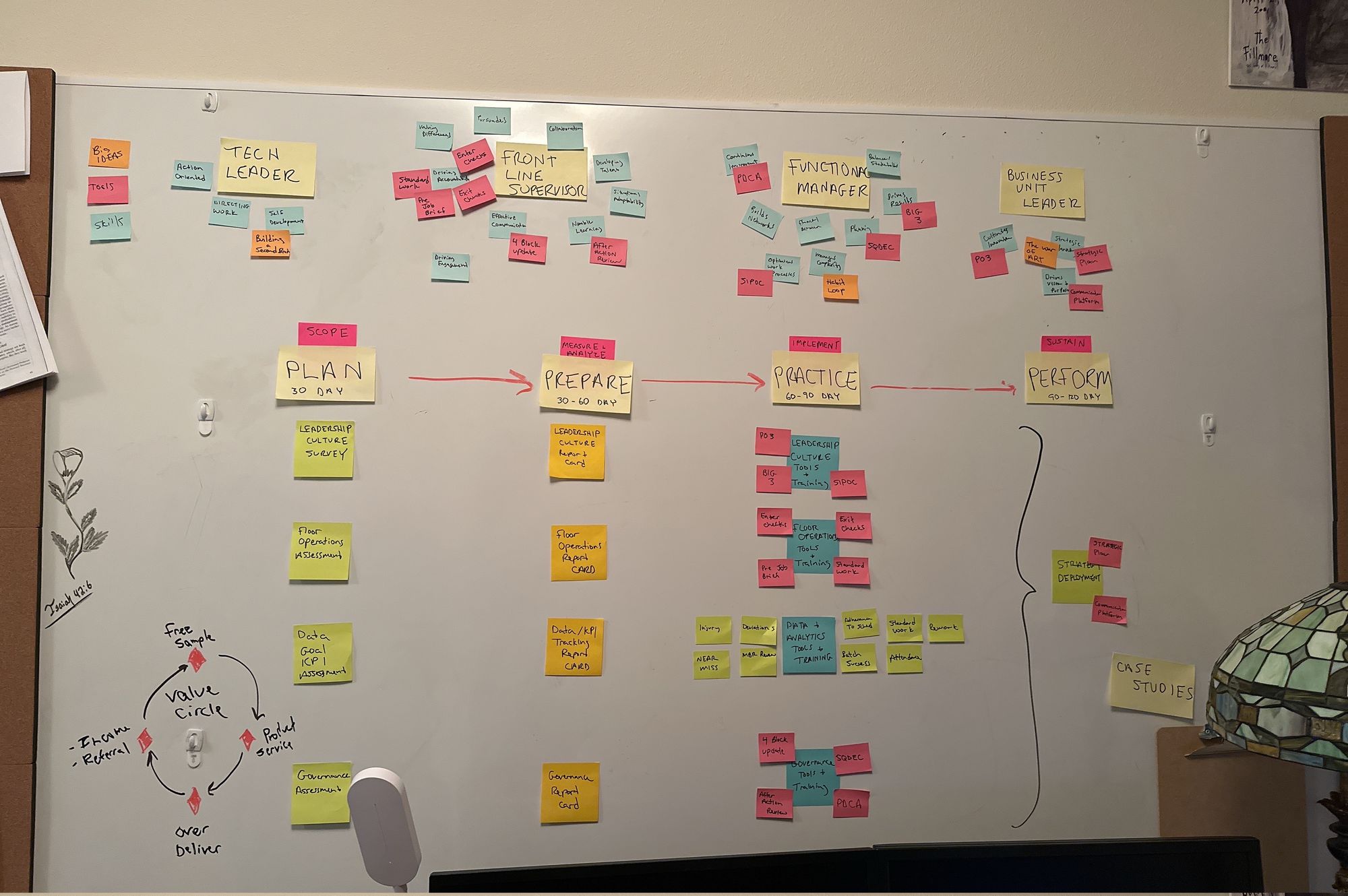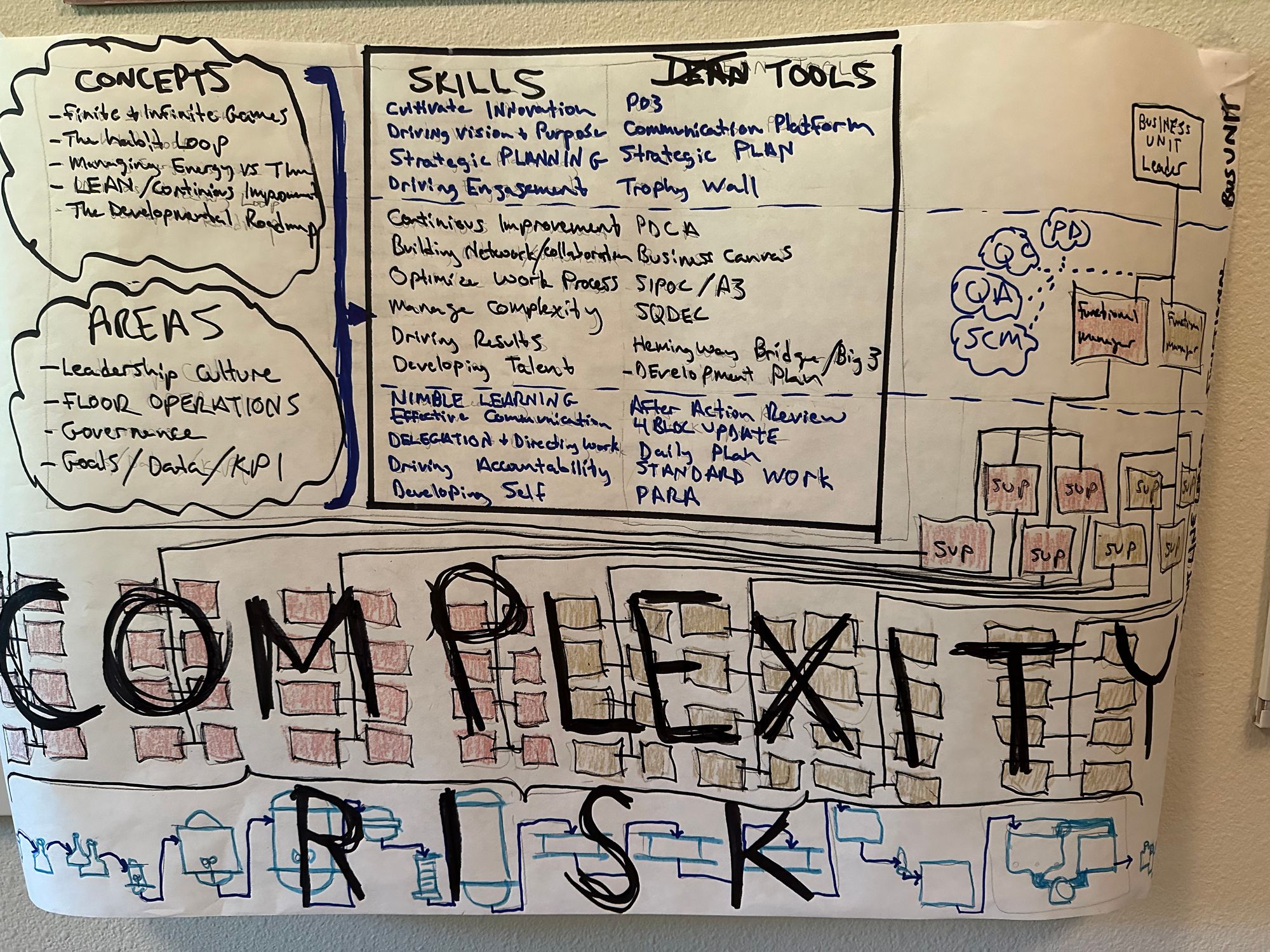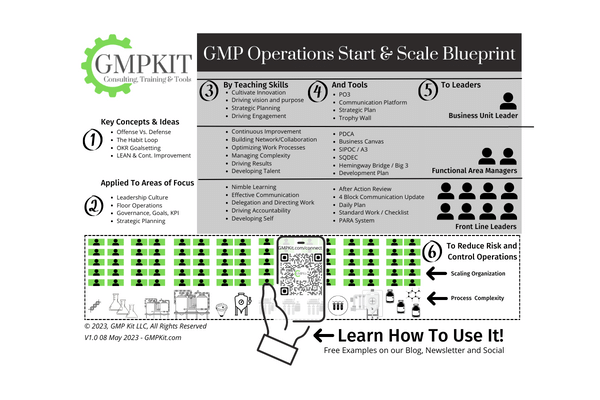Austin Kleon tells us to "become a documentarian of what you do". This post is an exercise in just that. Over the last few weeks I have been prototyping a framework around my philosophy of operations management and distilling it down to a few fundamental ideas. This post describes the process that I used.
First, a little backstory... If you are new here and don't know, I am in the process of building a consulting business using lessons learned from 25+ years of biotechnology start ups, scale ups, big wins, mishaps and lessons learned. Content that is a little more buttoned up lives over on my business website. This blog is the experimental site... the workshop where I test things out, veer off topic, and experiment with ideas before they are ready for the main site.
Anyhow, today in the workshop we are going over frameworks...
How I Knew I Needed a Framework
A little more backstory and context.. It only took about a week or so into my new venture to come to the realization that my business needs a framework.
Before formal launch I met with friends and mentors to go over my business idea. I quickly ran into a problem: I found myself rambling and blending business systems, start up plans, product ideas and consulting solutions into one messy topic (the beer served at these meetings might not have helped).
Anyhow, as I was explaining what I wanted to do I found that there were too many ideas, topic, connections, and examples on the table at any given time causing the thought process to be non-linear. I quickly realized that if I was going to communicate with a client or customer, build another blog or website, run some online marketing and grow my business I needed to get really clear on what exactly I am planning to do.
Conclusion... In order to communicate the ideas I had effectively, I needed a framework that people could follow to see how they come together.
Which brings us to this topic, what is a framework?...
What is a Framework Thinking?
Framework thinking refers to the ability to understand complex systems by breaking them down into smaller, more manageable parts. This approach allows us to see how the different components of a system interact with each other and how changes in one area can affect the entire system.
Here are a few examples of my favorite ideas are already frameworks:
- The habit loop is a framework for establishing healthy habits to improve performance
- OKR is a framework for goal setting
- Simon Sinek's Infinite Game is a framework for long term thinking
- LEAN is a framework for operations optimization
By using a framework to analyze a system, we can identify patterns, relationships, and potential causes and effects. Frameworks can also help us identify gaps in our understanding and highlight areas that require further investigation.
So, a few weeks ago I realized that I needed to simplify my philosophies on leadership development, start up, scale up and communication into a framework. I began the process of pulling those ideas from my brain and laying them out on paper... but it was an iterative process.
So, how do you build a framework?
Brainstorm Phase - Stick A bunch of Post It's on a Whiteboard
In the Barlow approach, the first step in creating a framework is to stick a bunch of post its on a wall. This is the brainstorm phase - and it is chaotic by design. This phase can be accomplished with three common tools: a sharpie, a flat surface and a stack of post its.
Here is the general process:
Generate a Bunch of Ideas - The Capture Phase:
In the first few days, I just started writing ideas on individual post-it notes. For me this was a walk down memory lane to capture all of the operations management ideas that have lead to breakthroughs and improvements. Anything that was an "ah-hah moment", breakthrough, win, loss or catastrophic disaster got captured with no organizational strategy.
I captured each idea on a separate note to make it easier to organize later. One thing I learned if you are going to do this... Don't worry about whether the ideas are good or bad at this stage; just focus on getting them out and sticking them on the wall - it's simple to remove them later.
Organize, Categorize and Prioritize:
Once you have a significant number of ideas, start grouping them into categories.
Move the post-it notes around on the surface to create logical groupings. These groups are visual patterns that will be meaningful to you.
This is the step where I started pulling the post its down from the board. Disconnected or "stand alone" ideas didn't make the cut.
For my framework prototype, the output of this step looked like the photo below:

Prototype Phase- Getting to Version 1
The prototype phase is where you get to really organize the groups and highlight the linkage. The goal here is to further organize the data and turn the data into information.
For me, this involved a large piece of paper and some crayons that the kids used to use when they were in grade school....
Here is a pro tip... I have no idea why this happened, but the crayons were the "secret sauce" in this recipe. Maybe it was because they belong to the kids, or maybe that I thought it was funny that I was unemployed and coloring in my basement, but for some reason the crayons put me into creative state that took the post it notes and converted them into functional parts of the fledgling framework.
The photo below is the output of the prototype phase:

Version 3 - Final Product
When you get the prototype done, it's time to do the finish work.
In my case, the framework is a process that can be summarized into one sentence:
Each element of that sentence is an category topic in my startup/scale-up leadership philosophy:
- Key concepts and Ideas (these are actually sub-framworks operating in my framework. Example: the habit loop)
- Areas of Focus (Leadership culture, floor operations, goals and governance, stratetgy)
- Skills (four or five most commonly used skills at each level of leadership)
- Tools (simple tools and templates to magnify the key skills)
- Levels of leadership and leadership roles (front line leaders, functional leaders, and business unit leaders)
- Risks (organizational complexity and scale, process complexity and scale)
The whole framework comes together into a single map (see image below). Now that these idea "live" in the framework I can leverage it to show how they are connected, to expand them in training, add blog posts, diagnose problems, identify missing tools, suggest areas for skill improvement... and all kinds of other things.

Before wrapping up, I wanted to circle back to to the original quote that I opened with... "become a documantarian of what you do"... If you have ever gone through this process or are planning to, please don't hesitate to drop a comment below. I would love to hear about the outcome or see the approach!
